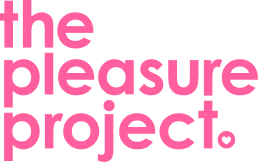So we are a little bit plesed (well actually quite a lot) because Professor Haddad from the Institute of Development Studies at Sussex University has written all about our evidence review ‘Everything you have ever wanted to know about pleasurable safer sex but were afraid to ask’…..we have replicated it in full below. Cos he deserves a gold medal in our ongoing pleasure Olympics..
Prioritising Pleasure: A Path to Safer Sex? by Lawrence Haddad
No, this blog is not a blatant attempt to increase my page views. It is about a new report produced for last week’s HIV/AIDS Conference in Washington DC: ‘Everything you have ever wanted to know about pleasurable safer sex but were afraid to ask Were Afraid to Ask.
It is produced by Wendy Knerr and Anne Philpott of the Pleasure Project for the IDS Sexuality and Development research programme.
The report is a literature review which asks a number of questions about the motivations for safer sex and the role that pleasure seeking plays in those motivations. It takes as its starting point the fact that much of the research on what influences whether safer sex is or is not practised comes down to safer sex being perceived as less pleasurable.
The report is a difficult one to read on a plane (which is where I wrote this blog) because it contains provocative (for a research review anyway!) pictures (yes, there is an erect penis in a condom). It is structured around 20 big questions (think Foreign Policy’s “Sex Issue”, but without the sexual repression) all of which are researched through online searches of the standard peer reviewed and grey literature databases.
The report is provocative for all the right reasons. It asks the question: if a lack of pleasure is one reason given for the non-practise of safer sex, can we make safer sex more pleasurable? Can it be eroticised either through framing, depiction or practise? If it can, will this lead to more positive attitudes towards safer sex, and therefore to the increased practise of safer sex?
Given the vast numbers of disability adjusted life years (DALYS) that sexual and reproductive health diseases still account for, finding ways of turning pleasure from a barrier to safer sex into an enabler seems sensible. The interventions need not be expensive and could lead to very quickly scaled up behaviour change, generating very large benefit-cost ratios (sorry, couldn’t help but bring that in).
The report concludes that we need more research at the intervention level, especially in countries with high burdens of HIV where evidence is scarcest.
Given the ease with which the topic can be (unfairly) dismissed, I would have liked the search and select protocols to have been ratified and even more transparent (was there a quality grading?) but for a non-systematic review the authors have given an admirably clear guide as to how they went about their review.
Pleasure is a driver of much human behaviour. Economists tend to use the unlovely term “utility” to describe some combination of satiation, satisfaction and pleasure, but as the newly discovered world of behavioural economics begins to be more and more influential, perhaps the role of pleasure will be explored in the world of financial transactions.
(It could give a whole new meaning to Freakonomics.)


